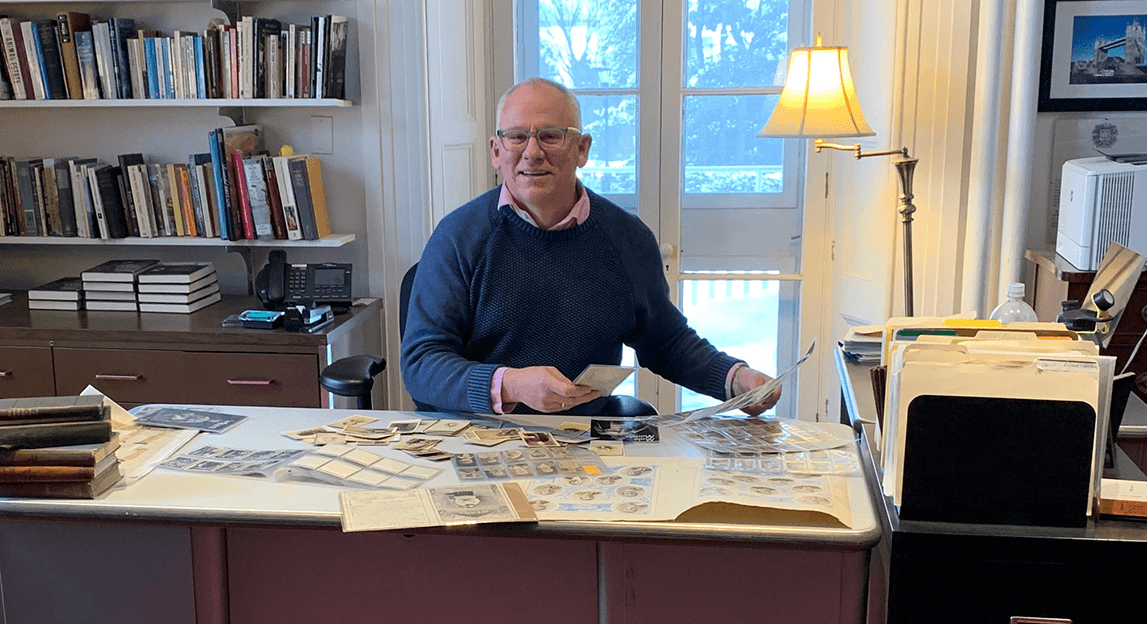October 2022 update: We are excited to announce that Professor Deslandes, now an Associate Dean for the College of Arts and Sciences, has been awarded the prestigious Morris D. Forkosch Award by the American Historical Association for his book, The Culture of Male Beauty in Britain: From the First Photographs to David Beckham. This award, one of the most important in the field of British history, recognizes the best book written in English on the history of Britain, the British Empire, or the British Commonwealth since 1485.
Modern ideas of male beauty can be traced back to the rise of photography in 19th century Britain, Department of History Chair Paul Deslandes writes in his new book.
The book, “The Culture of Male Beauty in Britain: From the First Photographs to David Beckham,” chronicles the history of male beauty, male grooming and male self-representation from the 1840s on.
It was published in early January by the prestigious University of Chicago Press.
“The book really debunks the notion that these are very recent developments,” said Deslandes, who teaches courses on LGBTQ and British history.
Deslandes began thinking about the book while working on another book, “Oxbridge Men: British Masculinity and the Undergraduate Experience, 1850-1920,” originally released in 2005.
As he researched student culture from that time period, he kept coming across discussions of physical appearance and dress — and even accounts of contests for the most handsome man on campus.
“I was kind of intrigued by that as a potential topic,” he said. “That was the genesis of the project.”
Much of the book tracks trends, particularly in the rise and fall of standards of beauty. Hair is a key indicator in that, Deslandes said.
In the late 19th century, as an example, male facial hair in Britain fell out of favor. Behind that trend was an increased notion that masculinity is rooted in the body and how it is presented. So muscularity and clean-shavenness became popular, Deslandes said.
Those trends often corresponded with societal ideas that developed as capitalism grew in Britain. Deslandes said that good looks were linked to success economically, and that for men, beauty became another credential and another form of competition.
World events informed ideas of male beauty, too, he said. The deluge of death that arrived with World War I gave rise to ways of countering the destruction of the male face. New techniques emerged in the field of plastic surgery. Commemorations evolved as well; Deslandes said, citing the 1915 death of poet Rupert Brooke, widely admired for his looks.
“When he dies, people choose to remember him in a way that, I think, functions as an antidote to all of the physical destruction, the destruction of male faces and bodies,” he said. “And that is reflected in the kinds of memorials that get erected.”
The book also merges the study of LGBTQ history with traditional ideas of masculinity and heterosexuality, he said, and explores how gay men directed some trends in beauty.
Deslandes chose Britain because of the emergence of photography in that country and because Britain, then still widely imperial, exercised enormous global cultural influence.
“Britain actually enjoys a kind of an outsized influence in terms of defining beauty standards for men throughout the world,” he said.
The book closes by contemplating what these historical trends mean for modern times. One is the idea of the metrosexual, a man who identifies as straight but also as one who is highly concerned with beauty. When that term emerged in the 1990s, it was considered unique. But the book argues the identity had a much deeper history.
The book also offers ideas for understanding how people now can make quick judgments about physical appearances through social media, especially via dating apps.
“What I argue in this book is that this push toward getting people to learn how to read physical attractiveness and assess it has this long history that dates back to the rise of photography,” he said. “To understand what's happening with social media and dating apps … you have to look at this longer history.”
Deslandes’ book is available for purchase online.
Deslandes is chair of the Department of History at the University of Vermont.
